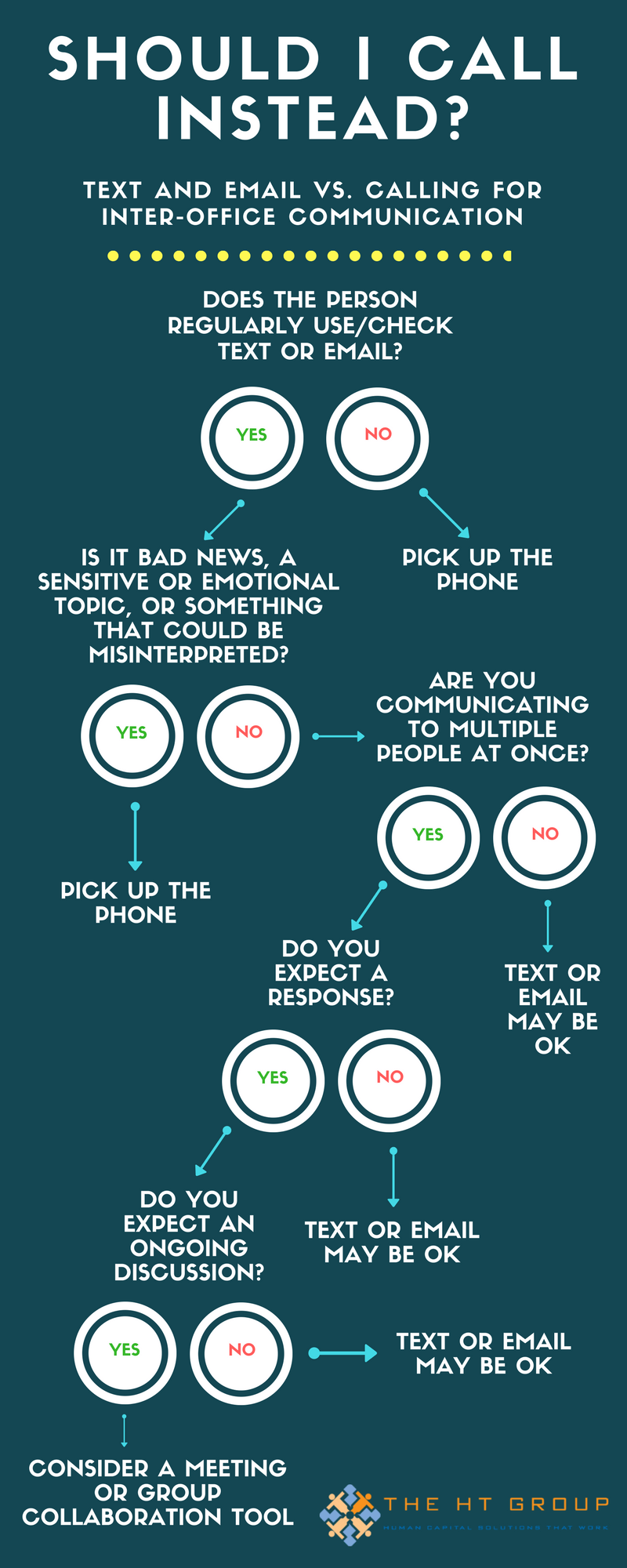With email, text, instant messaging and social apps taking over, it seems we rarely have the need to pick up a phone any more. But opting for a causal text for certain employee communications can come back to haunt you. Here are some tips from the experts to help you and your employees decide what form of communication is best.
1. Don’t fall for the hype.
You may have heard that Millennials prefer text over any other communication. In fact, it was recently reported that many young professionals prefer to be fired over text or instant message than in person. But that doesn’t mean it’s the best way to break certain news, as this CNBC article concludes.
In some situations, electronic communication may cause more problems than it solves. With verbal communication, there is a level of context provided through tone of voice, volume level, and more. However, these context clues are absent with electronic communication and can cause misunderstandings if the context of texts and emails aren’t made clear.
2. Have a plan.
Creating an effective internal communications plan is a great way to get the entire management of your organization on the same page. Here’s some advice from Fast Company on how to make it happen.
3. Add more plans, if necessary.
Texting and other cellphone use in the workplace can be a distraction that can interfere with production, privacy, and safety. Due to these risks, many employees have created a specific cellphone policy for the workplace, as Austin-based Lynch Law Firm PLLC explains here.
4. Don’t commit group texting sins.
Whether for work or play, you may find yourself in an increasing number of group texts lately. While efficient for the originator of the text, they can also be downright annoying. Huffington Post Editor Alexis Kleinman offers advice on the 8 commandments of group texting that you don’t want to miss.
5. Understand the pros and cons of employee communication software.
Employee engagement and communication tools like Slack have become a popular way for organizations to spread internal messages. These tools are terrific in many ways, but they aren’t perfect for every situation. Community manager and blogger Evan Hamilton explains.
6. You still need to talk to people sometimes.
As much as many young professionals would like it to be true, text and other non-verbal tools aren’t always the best way to communicate. SHRM provides this no-nonsense guide on when an actual verbal conversation is necessary.
We took SHRM’s advice a step further by creating this decision tree on how to choose your best method of communication when delivering a message to employees. Take a look and let us know what you think. Is it overly simple or is it really this easy for employers to take a moment to consider a few key factors before hitting send?

Need to Find Qualified Employees?
If your company is in search of skilled employees, contact The HT Group here:
Like what you read?
Subscribe to our newsletter for more!
Copyright: sifotography / 123RF Stock Photo




